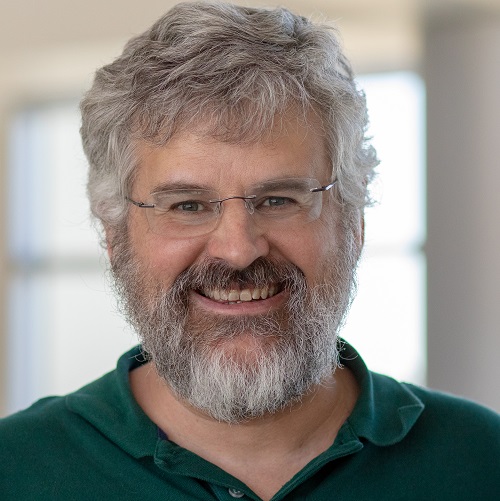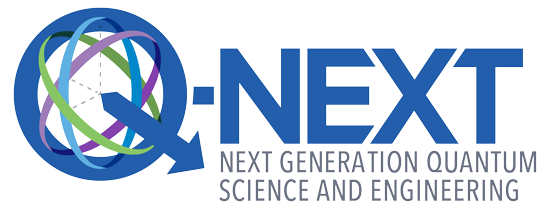quantum sensing
-

A one-stop shop for quantum sensing materials
Researchers have created extremely thin membranes of pure diamond in which carbon atoms are replaced nitrogen. These defects connect to neighboring atomic vacancies,creating unusual quantum systems for storing and processing quantum information. Read More
-
Sensing a cure: quantum technology takes aim at neurodegenerative disease
From the University of Chicago: Q-NEXT collaborator Peter Maurer at the University of Chicago creates next-generation quantum sensors that will unlock new doors in biological and medical research. Built from diamonds and powered by quantum physics, Maurer’s nanosensors will be able to measure magnetic and electric fields, time, temperature, and pressure inside a living cell. Read More
-
A quantum sense for dark matter
From Science: Quantum sensing can "make it possible to do an experiment in 3 years that would otherwise take thousands of years," says Q-NEXT collaborator Kent Irwin. By harnessing the strange rules of the subatomic realm, quantum sensors could solve one of the universe’s biggest mysteries. Read More
-
A quantum of sensing — atomic scale bolsters new sensor boom
From IEEE Spectrum: An emerging generation of quantum sensors lead to new levels of sensitivity, new kinds of applications, and new opportunities to advance a range of fields, technologies, and scientific pursuits. Quantum sensing research by Q-NEXT collaborators David Awschalom, Kent Irwin, Paul Kwiat, Peter Maurer, and others is opening up possibilities in medicine, astrophysics, engineering and tech. Read More
-

A new platform for customizable quantum devices
A ground-up approach to qubit design leads to a new framework for creating versatile, highly tailored quantum devices. Read More
-

Shimon Kolkowitz of Q-NEXT quantum center awarded Sloan Fellowship
The competitive, prestigious award is given to promising researchers in the early stages of their careers. Read More
-
The quantum squeeze
From Symmetry: A technique from the newest generation of quantum sensors is helping scientists to use the limitations of the Heisenberg uncertainty principle to their advantage. Q-NEXT collaborator Kent Irwin helped develop the transition-edge sensor, a progenitor to the quantum squeezing technique. Read More
-
Chicago Quantum Profile: Joe Heremans
From the Chicago Quantum Exchange: Joe Heremans is a staff scientist at Argonne National Laboratory, where he works on wide-bandgap solid-state materials systems with individual atomic defects. These defects “trap” an electron whose spin state can be manipulated with lasers, electric and strain fields, and microwaves. These systems have promising applications in quantum communication and sensing. Read More
-

Argonne quantum research may reshape how we sense and relay data
The smallest bits of matter and energy are the building blocks of a radically new paradigm for sensing and relaying information. Read More
-

Preparing for breakthroughs in quantum sensing
We have a great opportunity for advancing quantum sensing through Q-NEXT thanks to a combination of recent breakthroughs in our ability to control and manipulate quantum states and Q-NEXT's investment in infrastructure and projects to use entanglement in systems. As we enter Q-NEXT's second year, the Quantum Sensing Thrust is ramping up plans to leverage entanglement and squeezing for advantages at new frontiers of sensitivity, length scale and frequency scale. Read More
In the News
See all In the News-
The best qubits for quantum computing might just be atoms
From Quanta: Mark Saffman of the University of Wisconsin–Madison and Infleqtion is featured in this comprehensive overview of neutral-atom qubit research. Read More
-
How quantum computing could help us understand the universe
From PBS NewsHour: David Awschalom appears in this piece on the next generation of computing, one that will be far more sophisticated and dependent on understanding the subatomic nature of the universe. Read More
-
PME-led research into protein-based qubits earns $2.75M Moore Foundation grant
Bolstered by a new $2.75 million grant from the Gordon & Betty Moore Foundation, a team led by University of Chicago's Peter Maurer will soon study qubits made from protein. Read More
-
Infleqtion unveils 5-year quantum computing roadmap, advancing plans to commercialize quantum at scale
From Quantum Insider: Infleqtion shares a broad business update, including the first look at its new 5-year quantum computing roadmap. The roadmap's centerpiece is Sqorpius, the next phase of Infleqtion’s quantum computing program. Read More
-
Bringing quantum entanglement to the people
From the National Science Foundation: NSF’S Quantum Leap Challenge Institute Hybrid Quantum Architectures and Networks at the University of Illinois Urbana-Champaign, a Q-NEXT partner, has created a working demonstration that brings entanglement between photons to a public setting for the first time. Read More
